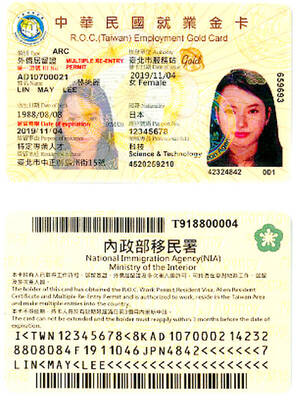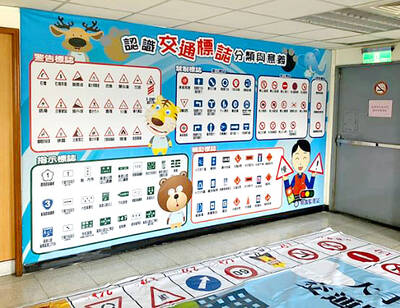Japan insisted yesterday it would not bow to the demands of Islamic militants in Iraq who threatened to behead a young Japanese unless Tokyo withdraws its troops from the country within 48 hours.
"The Self-Defense Forces will not withdraw," Prime Minister Junichiro Koizumi, a staunch US ally, said as he went ahead with a tour of typhoon damage in western Japan. "We must not bow to terrorism."
The al-Qaeda-linked group of Iraq's most wanted man Abu Mussab al-Zarqawi released a video overnight on the Internet of a shaggy-haired Japanese-speaking man in a white T-shirt, at the feet of three armed and masked men.
"We are giving the Japanese government 48 hours in which to withdraw its troops from Iraq, otherwise this infidel will join the others [executed]," a militant said in the video.
Among the others, the militant mentioned the American Nicholas Berg and Briton Kenneth Bigley, who were both decapitated.
The Japanese man said on the video: "Koizumi, they demand the Japanese government withdraw the Japanese Self-Defense Forces from Iraq or they will chop off my head.
"I'm sorry, but I want to come back to Japan," he said unemotionally in Japanese.
Japan identified the hostage as Shosei Koda, a 24-year-old from southern Fukuoka province who "has been wandering around many countries," said Chief Cabinet Secretary Hiroyuki Hosoda, the government spokesman.
Koda had been in New Zealand on a working holiday until July but had not been in contact since, his father said, according to the foreign ministry.
The incident marked the second hostage crisis faced by Koizumi, a close supporter of US President George W. Bush, since his historic decision to deploy troops to Iraq despite widespread domestic opposition.
In April militants kidnapped three Japanese aid workers and two journalists in Iraq but they were released unharmed after days of mediation.
Ambushes by Iraqi insurgents killed two Japanese diplomats last year and two Japanese journalists in May.
Koizumi told parliament late yesterday that Japan's involvement in Iraq to help with humanitarian and reconstruction work was "understood by the general public in Iraq.
"Regardless of this, captors are trying to remove the Self-Defense Forces from the country by taking Mr Koda hostage," Koizumi said.
The military deployment to Iraq is Japan's first since World War II to a country where fighting is going on.
Katsuya Okada, leader of the main opposition Democratic Party of Japan, who has criticized the dispatch as a violation of the pacifist constitution, said there is "no reason to listen to the kidnappers' demands."
However, some 120 peace activists protested outside parliament demanding Japan withdraw its troops.
Documentary filmmaker Hiroshi Shinomiya told public broadcasterNHK he met Koda at a hotel in the Jordanian capital Amman on Oct. 19. Koda told him he would take a public bus the next day to Iraq "simply because he wanted to see it."
"I told him he should not go, but he replied saying, 'No, I'll be just fine,'" Shinomiya said.

RESILIENCE: Deepening bilateral cooperation would extend the peace sustained over the 45 years since the Taiwan Relations Act, Greene said Taiwan-US relations are built on deep economic ties and shared values, American Institute in Taiwan (AIT) Director Raymond Greene said yesterday, adding that strengthening supply chain security in critical industries, enhancing societal resilience through cooperation and deepening partnerships are key to ensuring peace and stability for Taiwan in the years ahead. Greene made the remarks at the National Security Youth Forum, organized by National Taiwan University’s National Security and Strategy Studies Institution in Taipei. In his address in Mandarin Chinese, Greene said the Taiwan-US relationship is built on deep economic ties and shared interests, and grows stronger through the enduring friendship between

GAINING STEAM: The scheme initially failed to gather much attention, with only 188 cards issued in its first year, but gained popularity amid the COVID-19 pandemic Applications for the Employment Gold Card have increased in the past few years, with the card having been issued to a total of 13,191 people from 101 countries since its introduction in 2018, the National Development Council (NDC) said yesterday. Those who have received the card have included celebrities, such as former NBA star Dwight Howard and Australian-South Korean cheerleader Dahye Lee, the NDC said. The four-in-one Employment Gold Card combines a work permit, resident visa, Alien Resident Certificate (ARC) and re-entry permit. It was first introduced in February 2018 through the Act Governing Recruitment and Employment of Foreign Professionals (外國專業人才延攬及雇用法),

The Ministry of Transportation and Communications yesterday said that it would redesign the written portion of the driver’s license exam to make it more rigorous. “We hope that the exam can assess drivers’ understanding of traffic rules, particularly those who take the driver’s license test for the first time. In the past, drivers only needed to cram a book of test questions to pass the written exam,” Minister of Transportation and Communications Chen Shih-kai (陳世凱) told a news conference at the Taoyuan Motor Vehicle Office. “In the future, they would not be able to pass the test unless they study traffic regulations

EUROPEAN TARGETS: The planned Munich center would support TSMC’s European customers to design high-performance, energy-efficient chips, an executive said Taiwan Semiconductor Manufacturing Co (TSMC, 台積電), the world’s largest contract chipmaker, yesterday said that it plans to launch a new research-and-development (R&D) center in Munich, Germany, next quarter to assist customers with chip design. TSMC Europe president Paul de Bot made the announcement during a technology symposium in Amsterdam on Tuesday, the chipmaker said. The new Munich center would be the firm’s first chip designing center in Europe, it said. The chipmaker has set up a major R&D center at its base of operations in Hsinchu and plans to create a new one in the US to provide services for major US customers,